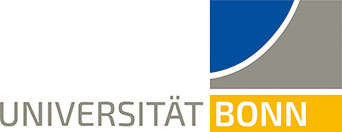Click chemistry for metabolic tracing of lipids
Lipid metabolic tracing – studying the dynamics of the lipidome
Why?
Fatty acids are major building blocks of many of the thousands of lipids in our body. Accordingly, the metabolism of fatty acids is extremely complex, and it is amazingly fast – a labeled fatty acid is found in hundreds of different compounds after five minutes of metabolism. Understanding this complexity and its pathological deviations needs experimental tools that offer high sensitivity and time resolution.
How?
Tracing needs a tracer that is as similar as possible to the target molecule but nonetheless reliably distinguishable. Our tracers are alkynes - fatty acids and other lipids that contain a terminal triple bond (Kuerschner & Thiele, 2022). We feed them to biological systems in which they are metabolized, and then we collect and analyze the alkyne-containing (= labeled) lipids. For that, we employ the click reaction using azido reporters. We have developed two dedicated technologies:
Mass spectrometric tracing
This is the new approach published in 2019 (Thiele et al. 2019) and includes sample multiplexing capabilities. Extracted alkyne lipids are reacted with the azide reporter C171 or the azide reporters C175 for sample multiplexing.
Importantly, this approach if fully compatible with a parallel use of multiple alkyne lipid tracers as we recently described (Wunderling et al., 2023), offering multiplexed multilabeling analysis of lipid metabolism at unprecedended depth and detail.

C171 is optimized for improved detection by mass spectrometry. The positive charge strongly improves ionization, and the trialkylammonium group shows predictable fragmentation in tandem MS2.

Key advantages are:
- Perfect specificity: labeled species are reliably discriminated from unlabeled species even if present in trace amounts
- Strongly increased sensitivity: improved ionization results in improved sensitivity, typically by 5 – 50-fold.
- Absolut quantification by addition of internal standards
Typical performance (75000 hepatocytes per sample):
- Upon a 5 min labeling, identification of 150 – 250 labeled species
- Upon a 1 h labeling, identification of up to 1000 labeled species
- 15 – 20 lipid classes, 10 with absolute quantification
Single cell analysis:
- Hepatocytes labeled for 3 h
- Single cells by limiting dilution
- 60 – 100 labeled species with absolute quantification
Multiplexing:
A set of deuterated versions of the reagent, the C175 reagents, enables a multiplexed version of the procedure

Additional advantages of multiplexing:
- Four fold increased sample turnover
- Improved sample-to-sample comparison by elimination of stochastic variation
Further reading:
Multiplexed and single cell tracing of lipid metabolism: A step by step protocol. Nature Protocol Exchange
And the Behind the Paper blog at Nature’s Protocol and Methods Community
Fluorescent tracing
By reaction with a fluorogenic coumarin dye, labeled lipids become fluorescent. After separation by TLC, the labeled spots can be identified by co-migrating external standards and quantified relative to each other. Absolute quantification is possible but not as reliable as in mass spectrometry.

Key advantages:
- Easily accessible
- Parallel sample processing with high throughput
This method was originally published in 2012 (Thiele et al. 2012) and has since then been used in numerous publications.




